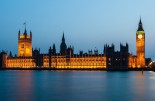Fidelity: Staying afloat amid a rising tide of debt
Fidelity: Staying afloat amid a rising tide of debt

The fiscal firehose deployed by governments is helping the global economic rebound from the Covid-19 crisis, but central banks have been playing a key role in keeping higher debt loads affordable.
Amid a blowout in the size of their balance sheets due to government bond purchases by the Fed, ECB, BOJ and BOE, what has been the impact of central bank policies on public sector debt service costs?
A bigger load doesn’t always mean a heavier burden. This week’s Chart Room looks at how public sector debt in the US has increased from 35 per cent of GDP in 2007 to 100 per cent in 2020. But by contrast, over the same time period the underlying debt service burden has remained broadly stable, helped by the sharp fall in yields seen in the decade that followed the 2008 global financial crisis. This contrast is even starker when we zoom out a few more decades.
A global paradigm shift
Shocked by the rapid pace of Covid-induced economic downturns, governments around the world have reached for the fiscal firehoses over the past year. Besides the US, most developed markets including Japan and much of Europe also saw gross government debt-to-GDP rise to record highs as policymakers attempted to counter the pandemic slowdown.
These fiscal measures have often been paired with paradigm shifts in central bank monetary policy, with the starring role played by the Fed, which last autumn launched its Flexible Average Inflation Targeting (FAIT) framework. This new policy framework shifts away from the narrow inflation targeting focus that had dominated since the late-1990s towards a more holistic understanding of the Fed’s dual mandate. In other words, key central banks are starting to require a much stronger threshold of evidence for inflation in the future, before any tightening of their extremely accommodative stance.
Implicitly included in the package is a sustained period of negative real rates. Despite explicit and frequent references to cyclical variables by monetary policy authorities when justifying their very accommodative policy stances, we believe sustained negative real rates are also required to ensure that these very heavy debt burdens remain affordable. This is likely to become clearer once reflation takes hold.
Over the longer term, it remains unclear how these heavy debt burdens will be resolved, with systemically-disruptive deleveraging still a tail-risk scenario. That said, central banks are helping to keep the ‘death spread’ (the difference between nominal growth and nominal interest rates) subdued. This will be important in buying time to generate a structural, positive shift in trend growth, which is needed to grow out of the current debt positions.










